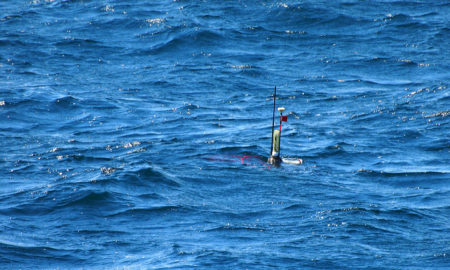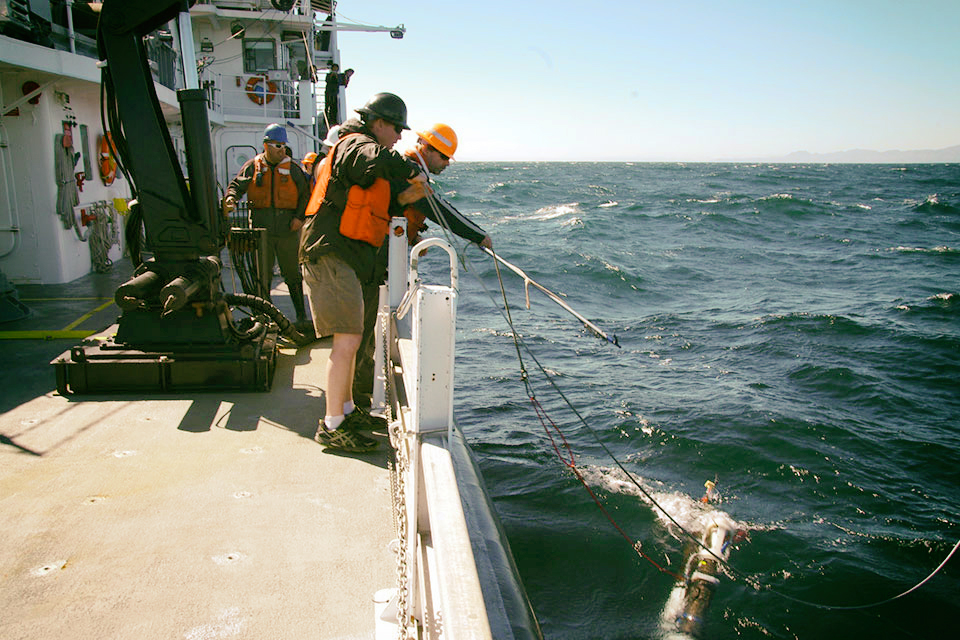There’s a mixture of relief and joy every time a robotic float is recovered. Years of research and months of intense engineering go into preparing each device for its life at sea, no matter how brief the stint. So when Carbon Flux Explorer 3 sent its ping this afternoon to say that it had surfaced and completed its mission, a day after it was first dropped into the Santa Cruz Basin, the reaction was one of excitement and anticipation.

Would you be able to see this robotic float from a quarter mile away? The captain of the Oceanus did with the help of binoculars.
Even with the GPS signal, it’s an impressive feat to find and retrieve the float. It is a small target in a large ocean, and the two antennae are black. The people who first saw the robotic float were instructed not to blink.
Capt. Jeff Crews pulled the Oceanus alongside the float, and a line of four people with pickup poles stood ready to bring it back on board. The float was on deck within an hour of the first ping.
While most of the time the test equipment is recovered intact, researchers know that a number of unexpected factors can thwart the best laid plans.

Todd Wood noted that a float on a previous research expedition was once lost after it got sucked underneath the props of a ship. Three years ago, they came close to losing a float after it stopped transmitting its location. Luckily, it popped up in front of the ship at 3 a.m., and they had to rush to get it back before it sank out of reach.
“We spent a lot of time sleuthing to predict where that float would reappear,” said Jim Bishop. “Luckily, another float was deployed with it at the same time, so we used the behavior of that device to predict where the missing float would go.”
The researchers will get to repeat this numerous times throughout this trip. Today, Carbon Flux Explorer 1 was deployed. The researchers expect to retrieve it tomorrow afternoon.
“It’s always good to come back with all the floats we brought,” said Wood. “It doesn’t always happen that way.”
Be sure to return to this site once the voyage ends (and more bandwidth is available) for more photos — and videos — from the research effort.
